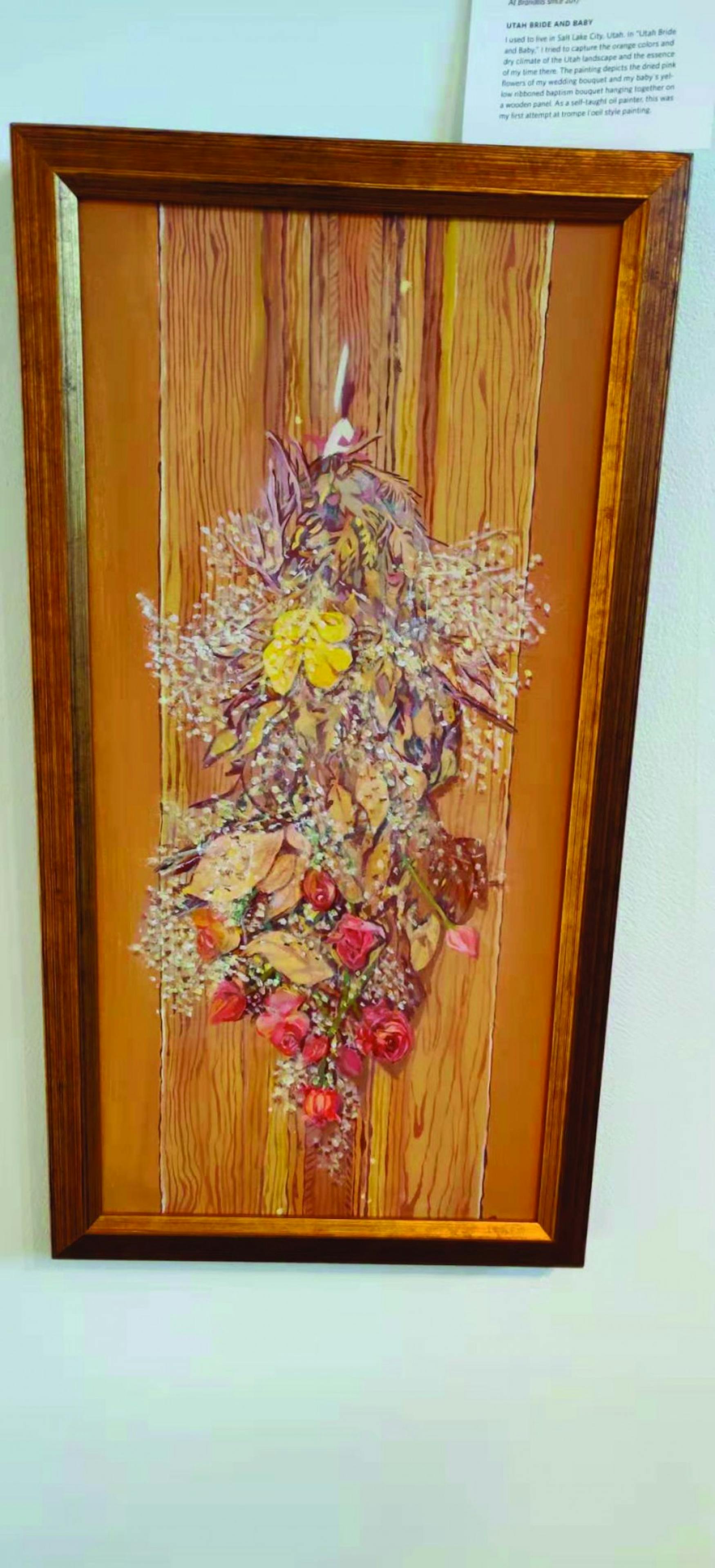JustArts Spotlight on the faculty/staff art exhibition 11/26/2019
Flowers are one of the most ubiquitous gifts across cultures. In many different places, flowers represent unique messages. When struggling with choosing something to bring, a flower bouquet is typically a good idea. However, as anyone who has received the gift would know, one of the downsides of having a bunch of beautiful flowers is their inevitable death when they finally run out of stored energy and gradually fall apart. While you can certainly delay the sadness by actually taking care of the beauties, if you are skilled in painting like Aina Lagor, program coordinator of the Women’s Studies Research Center, then you can preserve your ephemeral gift in painting.
As the title “Utah Bride and Baby” suggests, the painting includes bouquets from two important events of Lagor’s life, her wedding and her baby’s baptism. When I first saw the piece, I was amazed by how realistic the flowers look. I don’t mean how bright and lively the petals look, but how naturalistic the painting is. Although there are some light yellow and red highlights, most of the color palette of the painting is relatively darker. A lot of the roses have slashes of pale or dark light, showing the dehydration of these organic objects after weeks of display. The white flowers are small and scarce, like drips of snow melting too soon as they fall to the ground. All the leaves are yellow and brown, matching the background of the work. Instead of the blossoming spring season, this painting captures the essence of fall.
Remember the feeling when you see an old photo from decades ago? The color is off and the paper is yellow, but it is the imperfection that makes it perfect because of the memories it carries. We may not be young forever, but it’s the memory that we cherish until the very end. The bouquet in “Utah Bride and Baby” is not at its prime, but carries marks of time. It’s not only about the beginnings of new chapters of life, but also how far we have come and what a beautiful journey it has been.



Please note All comments are eligible for publication in The Justice.